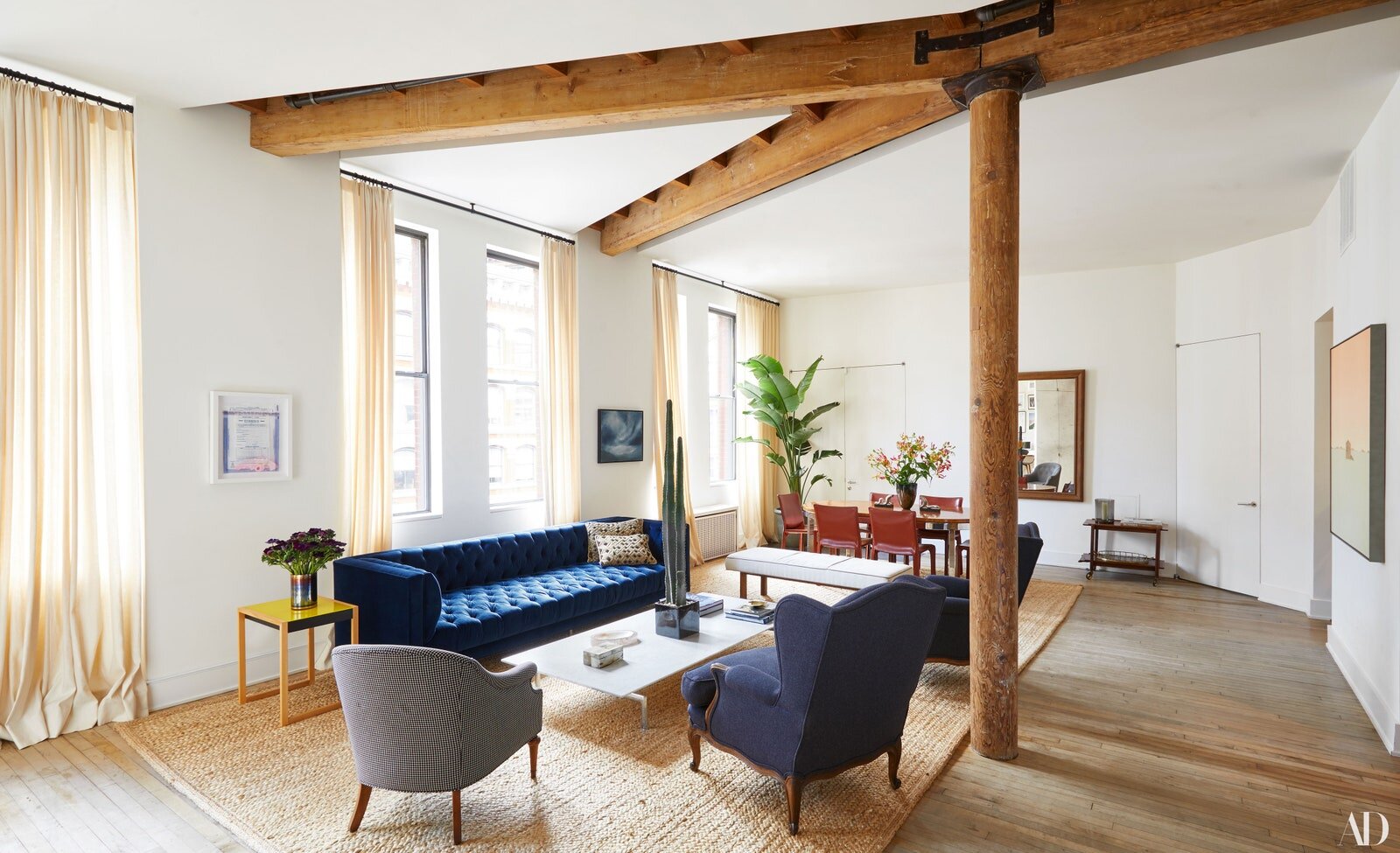Window Dressings 101
Windows. Every home has them. Everybody loves them. But what do you do if you need a little privacy from curious outside eyes? A quick search on the web could quickly lead you into a confusing rabbit hole of treatment options. Do I need curtains? Or drapes? Is there a difference? What about blinds? Fabric, wood, woven, zebra, cellular, patterned, solid, pleated, roman, roller… What does any of it mean and what does it do? Read on for a quick and dirty demystification of Window Dressings 101 so you can make the selection that is right for you.
Melling Interiors
Drapes vs Curtains. How they’re the same and how they aren’t.
Often these terms are used interchangeably since both drapes and curtains are made of fabric panels that hang from rods that are affixed by hardware bolted to a wall (or sometimes ceiling) above a window. They are able to be opened and closed along the rod to block out light, noise, and heat or cold, from the outside and provide privacy. The key difference between drapes and curtains is that drapes are often more tailored (usually custom made), with an attached liner, medium to heavyweight fabric, and often some sort of fancy pleating or other decorative detail at the top. They are the posh cousin to the “curtain” which is usually a simple panel (or pair of panels) that you can typically pick up at any home-goods store. Curtains are in general less tailored and more casual than drapes and come in a variety of fabrics, often unlined. Another term you may come across when searching for curtains and drapes is the word “sheers” which simply refers to an extra thin type of curtain that is meant to softly filter light but otherwise provides no added function. A great look that gives multiple layers of style and functionality is to layer sheers and curtains or drapes on a double curtain rod. Because both drapes and curtains are simply pieces of fabric, the options for pattern, color, texture, and style are basically endless, making these types of window dressing my personal favorite and a fantastic way to draw attention to your windows and show off your unique tastes.
Gotcha Covered
50 Shades of Shades. The best of the bunch. IMO.
Deep breath… we are about to dive into SHADES. But don’t worry, we will only hit on the ones worth looking into and leave the rest in the shady past. In order of my favorites to completely acceptables, lets look first at wooden woven roman shades. Wooden roman shades have skyrocketed into popularity as a great way to provide light filtering and privacy while bringing in natural tones and textures to your window dressings. With options like black-out lining and cordless lift, wooden roman shades are a super modern but classic look that can function well in just about any room. They are made of wood slats that have been woven together in some fashion, typically by thread or cord and come in many finishes from whitewashed, to driftwood brown, to deeply stained ebony. These roman shades can be mounted on either the outside of your window frame or (more commonly) the inside of the frame by hardware that is affixed to the top of the window. Wooden roman shades are my favorite for bringing a casual but custom feel to my windows.
Next on the list is fabric roman shades. Like the wooden woven shades, these are often mounted on the inside of a window frame (but could be mounted outside) and offer a variety of options for light-filtering, black-out, or privacy liners. Fabric roman shades can be customized much in the same way curtains and drapes can since they offer the same extensive selections in terms of color, pattern, and materials to choose from. I prefer to use this type of window treatment in areas where curtains would be a nuisance such as kitchens and bathrooms. They are a great way to bring in a pattern or color to an area that doesn’t typically have soft furnishings elsewhere.
Cellular shades are also a great option and are definitely more economical than the other shades mentioned. Once thought of as cheap paper fan-style window dressings, cellular shades have made huge improvements in their style and functionality over the years. These shades are made out of a thin stiff fabric often with a plastic or poly content that has been shaped into a pleated accordion look, featuring two layers that are joined together, creating little diamond-shaped “cells” in between each fold when extended. They are mounted to the window similar to the roman shades on either the inside or the outside of the frame. Cellular shades come with a slew of choices as it pertains to function, featuring different levels of light blocking, top-down/bottom-up movement, and cordless and even motorized options. Typically, you will find cellular shades in varying colors but usually will not see a patterned style available for purchase. I think these kinds of shades shine when privacy and functionality is the primary concern, like in a bathroom, workroom, or closet although the nicer styles look great in contemporary spaces where clean and sleek window treatments are desired.
To end our shade shallow dive, lets talk about roller shades. Roller shades are the most basic of the shades we are discussing here, a single layer fabric (or plastic, vinyl, or combination of the two) panel that is wound up on a roller affixed to typically the inside of a window frame. The roller shade can work on a tension system allowing to go cordless by using springs inside the roller rod that pull up the shade with a short little tug. Or, the more tried-and-true style is a continuous cord that allows you to manually roll the shade up and down. The fancier versions now have the option for a motorized lift as well if you’re averse to getting up to shut the shade from your comfy spot on the sofa. Roller shades are typically inexpensive and come in a variety of colors, textures, and patterns. Light filtering tends to fall more on the black-out side of the spectrum with this shade style, although some light-filtering options may be available with a limited color palette.
Super classic shutters and blinds. Take a cue from the traditionalists.
What once were designed to protect the inside of a home from the outside elements, shutters have been a staple of traditional homes for centuries. Blinds are their more recent relative and began to be the go-to window dressing for new homes in the 80’s and through to current times. Shutters are custom built out of wood or composite material to fit the window perfectly, usually affixed by hinges attached to the inside of the window frame allowing the shutters to sit snuggly inside. They have the ability to be swung up like doors on either side for a full view of the window or the slats can be adjusted easily, opened to the homeowners desire based on how much light needs to be let in, but still allowing for privacy. Shutters can block out a lot of light when all the slats are shut but don’t allow for as much light to come through when slats are open as the other window treatment options mentioned above, which may be a deal-breaker for those who love to be blasted by sunlight all day long. Often seen in more traditional spaces, shutters look super chic when painted to match the wall color but can be painted or stained in just about any tone you can imagine, allowing for multiple fun options to spruce up your room.
Blinds, we are talking horizontal blinds (we will not discuss the horrid vertical blind here my friend), are sort of an adaptation of the shutter and are usually made in cut-to-fit options that you can buy at home supply centers. They are typically made of vinyl, wood, or composite, or even metal although those are cheap hotel-style blinds and shouldn’t ever make an appearance in your sacred home. Blinds are mountain inside the window frame on a bar that the blinds then hang from, each slat linked together by cord that runs the length of the blind and allows for raising and lowering as well as tilting the slats to allow for light control. There are many new options for blinds such as cordless lifts and top-down/bottom-up options. Like with shutters, there are also a myriad of stain and color options to fit your scheme and style. Blinds can be less expensive than the window shade options above and because of the many cut-to-size options on the market are the easiest and most convenient to get a hold of if you’re in a time crunch and need some privacy asap. But…they’re kind of ugly IMO so if I were you I’d pair them with a pretty style of window dressing like a valance or curtains that can soften and elevate their harsh look.
Oh Joy
With everything MEASURE then MEASURE AGAIN. And when in doubt, layer up.
Regardless of what window dressing you decide on, the most important thing is to GET THE MEASUREMENTS RIGHT. Especially when it comes to custom orders, I don’t know if there’s anything more frustrating than finally getting your shades in and they won’t fit in your window frame, or worse, they’re 5 inches shy of full privacy. If you don't trust your ability to properly use a tape measure, phone it in and ask a pro for help. Any window treatment shop will have people ready to help you measure and install your window dressings when the time comes.
Also, there may be times when simple is best, but usually layering up the window with various styles of shades and drapes make for a more luxurious and put-together look, not to mention will allow for multiple “privacy settings” throughout the day. My personal favorite is to layer woven wood roman shades with curtains in places like bedrooms, living, and dining rooms. It adds so much oomph and texture, you will not go wrong with that combo.





